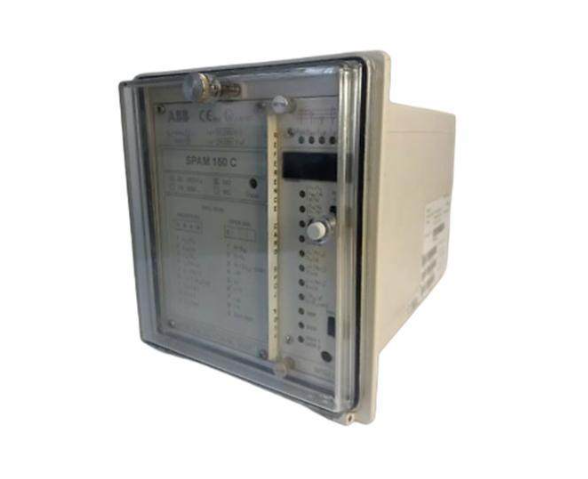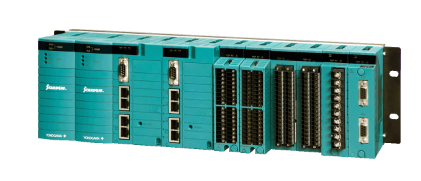SPCJ4D34-AA is a current/ground fault monitoring module integrated with industrial Ethernet I/O function in ABB SPAM 100 series. On the basis of retaining the original protection functions of medium and high voltage motors and feeder systems, it adds an industrial Ethernet communication interface to achieve real-time data exchange with upper monitoring systems (such as SCADA and DCS). Its core value is upgraded to "precision protection+system collaboration+remote monitoring".
ABB SPCJ4D34-AA Industrial Ethernet I/O System Module
Product positioning
SPCJ4D34-AA is a current/ground fault monitoring module integrated with industrial Ethernet I/O function in ABB SPAM 100 series. On the basis of retaining the original protection functions of medium and high voltage motors and feeder systems, it adds an industrial Ethernet communication interface to achieve real-time data exchange with upper monitoring systems (such as SCADA and DCS). Its core value is upgraded to "precision protection+system collaboration+remote monitoring".
Its industrial Ethernet I/O function breaks the local control limitations of traditional modules, supports remote parameter tuning, fault information uploading, and equipment status monitoring, and is widely applicable to industrial scenarios that require centralized control such as metallurgy, power, and petrochemicals. It is particularly suitable for unified protection and operation of cross regional motor clusters.
Core functions and protective features
Add industrial Ethernet I/O core functionality
Communication protocol support
Compatible with mainstream industrial Ethernet protocols: Profinet RT/IRT, EtherNet/IP, Modbus TCP, communication rate 10/100Mbps adaptive, supports dual network redundancy (Ring topology), ensures data transmission reliability
Remote I/O interaction capability
Provide 8 digital inputs (DI, used for external device status acquisition, such as circuit breaker opening and closing signals), 4 digital outputs (DO, used for remote control, such as relay tripping commands), input voltage 24V DC, output load capacity 2A/channel
Data collection and uploading
Real time collection of key data such as three-phase current, grounding current, thermal capacity, and fault status, with a sampling frequency of 50/60Hz. The data upload cycle can be set (100ms-1s), and remote export of event logs (including timestamps) is supported
Remote operation and maintenance function
Support remote setting of protection parameters (such as overload trip threshold, ground fault sensitivity), start/stop protection function, and reading self check reports through Ethernet, without the need for on-site operation, reducing operation and maintenance costs
3. System security and collaboration functions (supplementing Ethernet security features)
Network security protection: Integrated firewall function, supports IP address filtering, port access control, and prevents unauthorized devices from accessing; Support SSL/TLS encrypted communication to prevent data transmission from being tampered with or stolen.
Clock synchronization: Supports SNTP protocol to achieve clock synchronization with the upper system (error ≤ 1ms), ensuring uniform timestamp of fault events and facilitating cross device fault tracing.
Discontinue transmission mechanism: After a network interruption, the module will cache the last 100 event data locally, and automatically transmit it to the upper system after the network is restored to avoid data loss.
Technical specifications and installation configuration
1. Key electrical parameters (adding Ethernet section)
Parameter category
Specification details
Industrial Ethernet interface
2 RJ45 ports (supporting MDI/MDI-X automatic switching), supporting IEEE 802.3 standard, working temperature -25 ℃ to 70 ℃, protection level IP20 (module body)
Remote I/O interface
Digital input: 8 channels, 24V DC (± 10%), input current ≤ 5mA; Digital output: 4 channels, 24V DC/220V AC, maximum load 2A/channel
Communication delay
Protocol data transmission delay: Profinet RT ≤ 1ms, Modbus TCP ≤ 5ms, meeting industrial real-time control requirements
Power consumption
Industrial Ethernet I/O function with additional power consumption ≤ 3W (auxiliary voltage 18-80V DC/80-265V DC/AC, shared with the host power supply)
2. Key points of installation and adaptation
Network topology requirements: It is recommended to use a ring redundancy topology (such as Profinet Ring), with modules supporting MRP (Media Redundancy Protocol) and a network fault recovery time of ≤ 200ms. Star topology should be connected through an industrial switch to ensure a communication distance of ≤ 100m (Category 5e Ethernet cable).
IP address configuration: supports two configuration methods: setting a static IP address locally through the module panel dip switch (suitable for scenarios without a higher-level system); Dynamically allocate IP addresses remotely through Ethernet tools such as ABB Control Builder (suitable for centralized control scenarios).
Upper system adaptation: compatible with mainstream DCS/SCADA systems such as ABB System 800xA, Siemens WinCC, Rockwell FactoryTalk, providing standard OPC UA server interfaces and supporting bidirectional data exchange (such as parameter issuance and status upload).

- User name Member Level Quantity Specification Purchase Date
- Satisfaction :
-









Email:wang@kongjiangauto.com




































































































































